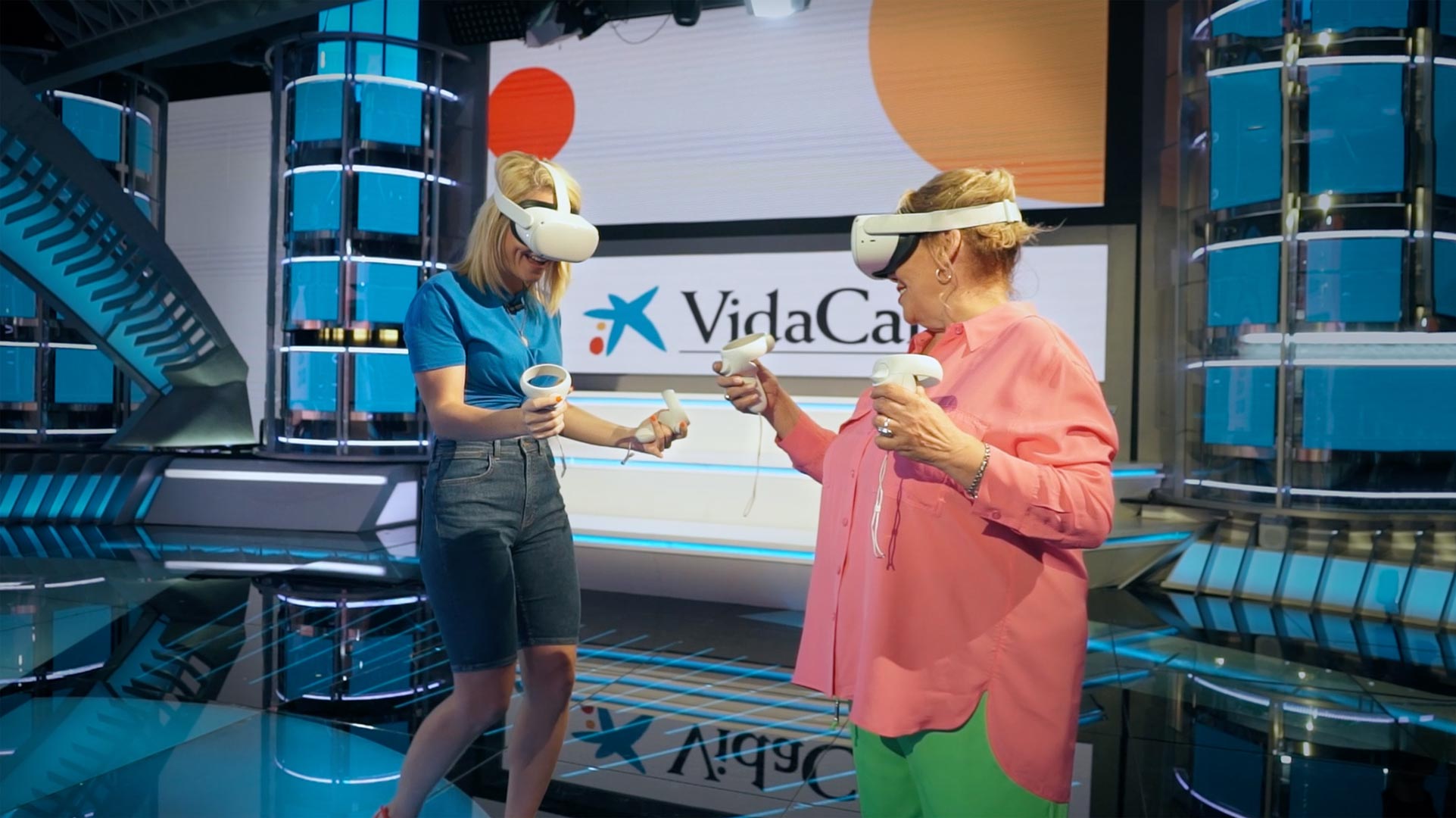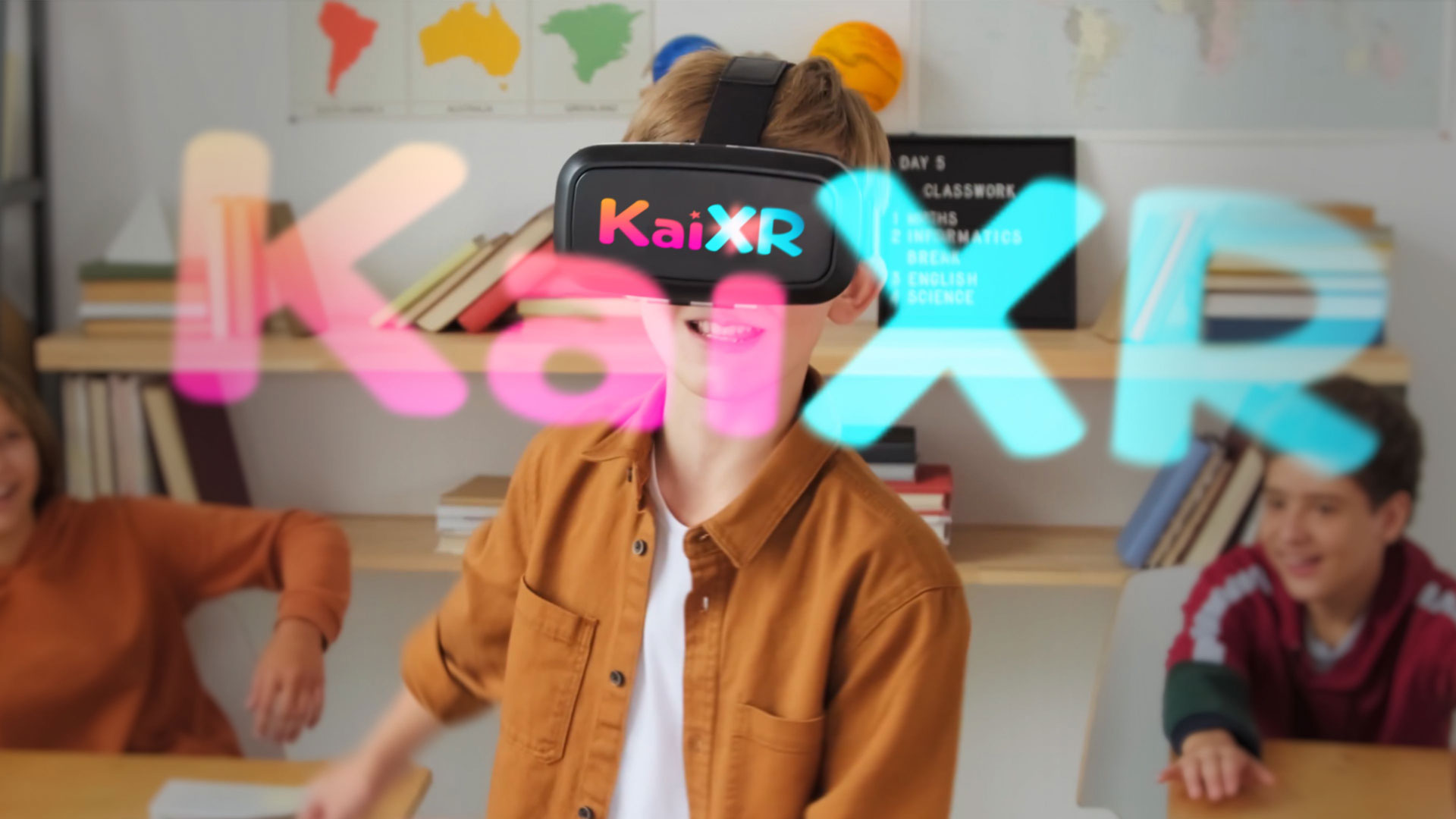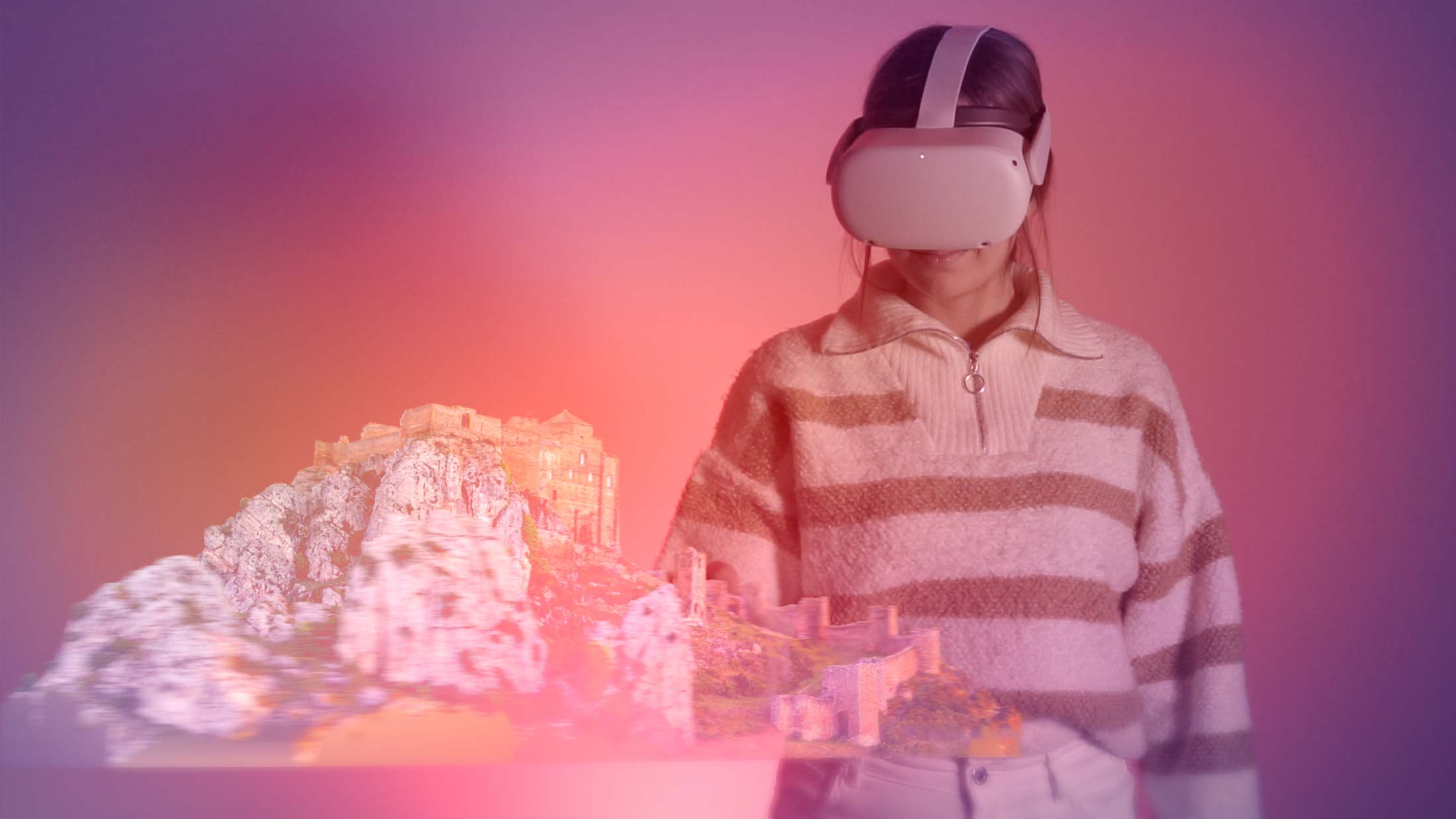Virtual Reality in education: features and benefits
Education in the 21st century is unthinkable without technology. New learning methods, new technologies online educational platformsThe new technologies, multimedia content, remote classes, mobile devices connected to the Internet... are here to stay in the classroom.
However, technology continues to advance and with it come new educational experiences that revolutionize everything we have known so far in the educational world. Among them is the Virtual Realitythe big technology trend which is a breakthrough in the immersion of students in the subject matter, in the retention of new knowledge and above all, in the connection of students at a cognitive and emotional level.
In this article we will explore how Virtual Reality is revolutionizing education. We will analyze its importance, review its applications and benefits and see what the future of this technology in the education sector will look like.
What is Virtual Reality?
Before delving into the applications and examples of how Virtual Reality is being incorporated into the educational system, it is first important to review what exactly Virtual Reality technology consists of.
Virtual Reality is the technology capable of to immerse ourselves in fully digital alternative worldswhere we, the users, are the ones who decide where to focus our attention. They are 3D environments in which our senses stop perceiving the real world thanks to the total immersion through Virtual Reality glasses.
With its ability to immerse us in virtual environments, Virtual Reality allows us to explore remote places, travel to the past and into the future, interact with three-dimensional objects and live experiences that until now we could only imagine.
A whole new universe of possibilities that transforms our way of knowing the world and our way of learning. Where motivation, attention, concentration and capacity to learn are living the experiences in first person enhance the acquisition of new knowledge.
Get to know our virtual reality services for companies.
Virtual Reality and Education: Complementary Worlds
It is a fact that traditional teaching methods based on reading and memorization of data have lost ground to new educational strategies that involve watching and listening to multimedia content. However, today's learners are the generation of video games, gamification, action, and she education system must adapt to the new times.
Technology and education need not be on opposite sides. They can work together, with the same goal. This is how new educational resources begin to emerge, immersive and interactive learning environments that seek to attract new generations, complementing traditional teaching methods to make the educational experience as complete as possible.
Main applications of Virtual Reality in the educational sector
With the entry of the Virtual Reality in educational programsThe new technology changes forever the way children and students learn about the world. With this technology they can visit any country, discover marine wildlife, travel to the past, the future or other planets, all without leaving the classroom.
The following are the most important applications of the Virtual Reality in education:
Gamification
It has been proven that being an active part of our learning process is much more effective than simply being passive receivers of information. The advantage of the incorporation of Virtual Reality is precisely this, the be an active part of the educational experience.
This technology offers the feeling of total immersion in learningThe main objective is the introduction of gamification, that is, the introduction of game dynamics, both collaborative and competitive, to generate greater motivation, recall and fun.
Immersive virtual classrooms
With Virtual Reality, the educational experience will beyond the four walls of the classroom. Thanks to this technology it is possible to visit the pyramids of Egypt in history classes. Stroll through the Louvre in art. Travel to the seabed in biology or explore the surface of the moon in science.
Transforms the more theoretical into experiential teaching methodsThe students will be able to explore, at their own pace, all of these virtual spaces three-dimensional first-person shooters.
Virtual Reality is also a very useful resource for consolidating the quality hybrid education. There are already higher education institutions that have a virtual campus identical to that of their physical facilities.
Also digital twins with libraries, laboratories, auditoriums... that can be developed both in Virtual Reality glasses and in web 3D. The goal is for remote students to be able to tour the facilities and interacting with teachers, peers and administrative staff as if they were physically there.
Simulations
Virtual Reality applied to education allows us to learn without risk in the classroom. educational simulations where tacit knowledge is fostered and trial-and-error exercises for the development of all kinds of skills.
The teaching of technical skills (hard skills) as well as social and transversal skills (soft skills) is carried out in the following ways interactive environments designed to the maximum detail. All to encourage student involvement.
From performing open-heart surgery to flying an airplane... Simulations are an important part of the unique tool for the training of professionals and university students from worlds such as healthcare, industry and aeronautics.
Benefits and importance of Virtual Reality in the classroom
Virtual Reality (VR) means that, more than ever before, we are putting into practice the learning by doing (learning by doing), turning the way we are used to learning upside down.
The immersion technology offers opens up a new range of educational experiences that facilitate knowledge retention and increase student interest. Let's take a look at all the benefits that Virtual Reality offers to education:
Increased depth of knowledge
One of the main challenges for teachers is to achieve that students not only learn, but also internalize conceptsas abstract as mathematics, physics or geometry.
With Virtual Reality everything changes. This immersive technology makes it possible to bring the subjects closer to the to facilitate understanding and the memory of them. Allowing, for example, to observe how the trajectory of a parabola changes when some variable of the equation is modified.
In addition, Virtual Reality also fosters greater attention on the part of the students. Being immersed in what we learn, with all our senses, motivation and attention grows exponentially.
Faster learning
Virtual Reality accelerates the learning process for students. Allowing, at the same time, each student to work autonomously. All thanks to the challenges, rankings and self-evaluations, where the student is aware of their processes, which encourages the search for improvement and motivation.
In addition, Virtual Reality experiences, being interactive, provide an interactive large amount of data on student performance. Data that can be used to generate reports and assess students' skills and abilities.
Greater inclusion
Virtual Reality applied to education is also a unique tool for instill values. The immersion generated by this technology allows us to have other types of first-person perceptions.
In addition, Virtual Reality allows persons with any type of disability or physical limitation can participate in the educational experience just like their peers. Traveling anywhere in the world and touring historical sites at their own pace.
As in the experience LOARRE XRa European social initiative that seeks to bring people with limited mobility closer to the history and beauty of the medieval castle of Loarre difficult to access.
Shining example of Virtual Reality in Education
There are several precedents in the use of Virtual Reality in the educational field, in which the following have been demonstrated motivational effects and improvements in student achievement. According to the latest studies of the Open UniversityIn a lesson taught in Virtual Reality, the retention of knowledge is multiplied by four times, and the learning period is halved. Distractions from other stimuli disappear and in turn, more cognitive, sensory and emotional circuits are stimulated at the same time.
A tangible example of the possibilities of technology in education can be found in the U.S. project Kai XR. A Virtual Reality platform where children can live immersive experiences in the different worlds of the platform: science, nature, travel, technology, sports... The latest in educational innovation.
What is the future of Virtual Reality in Education?
Although the implementation of this technology in the educational system is very recent, its positive effects on learning have already been proven. It is only a matter of time before Virtual Reality becomes established in all schools and universities as an educational tool. part of the resources available to teachers.
Virtual Reality is a powerful source of knowledge and learning environment. It is expected that in the future, educational experiences based on this technology will be more and more accessible, realistic and customized.
Thanks to its complementarity with other technologies, such as the Artificial Intelligence and the Internet of Things (IoT)As a result, classrooms will become increasingly digitized and interconnected, with access to much more information in real time.
The future of Virtual Reality in education raises new and exciting challenges to take the educational experience to the next level.
At Imasconoour team of engineers, designers and creatives has been working with us for many years. more than 12 years developing immersive experiences based on Virtual Reality.. Do you want to integrate Virtual Reality into your educational resources?Contact with us and we will help you to virtualize your classes and subjects!




